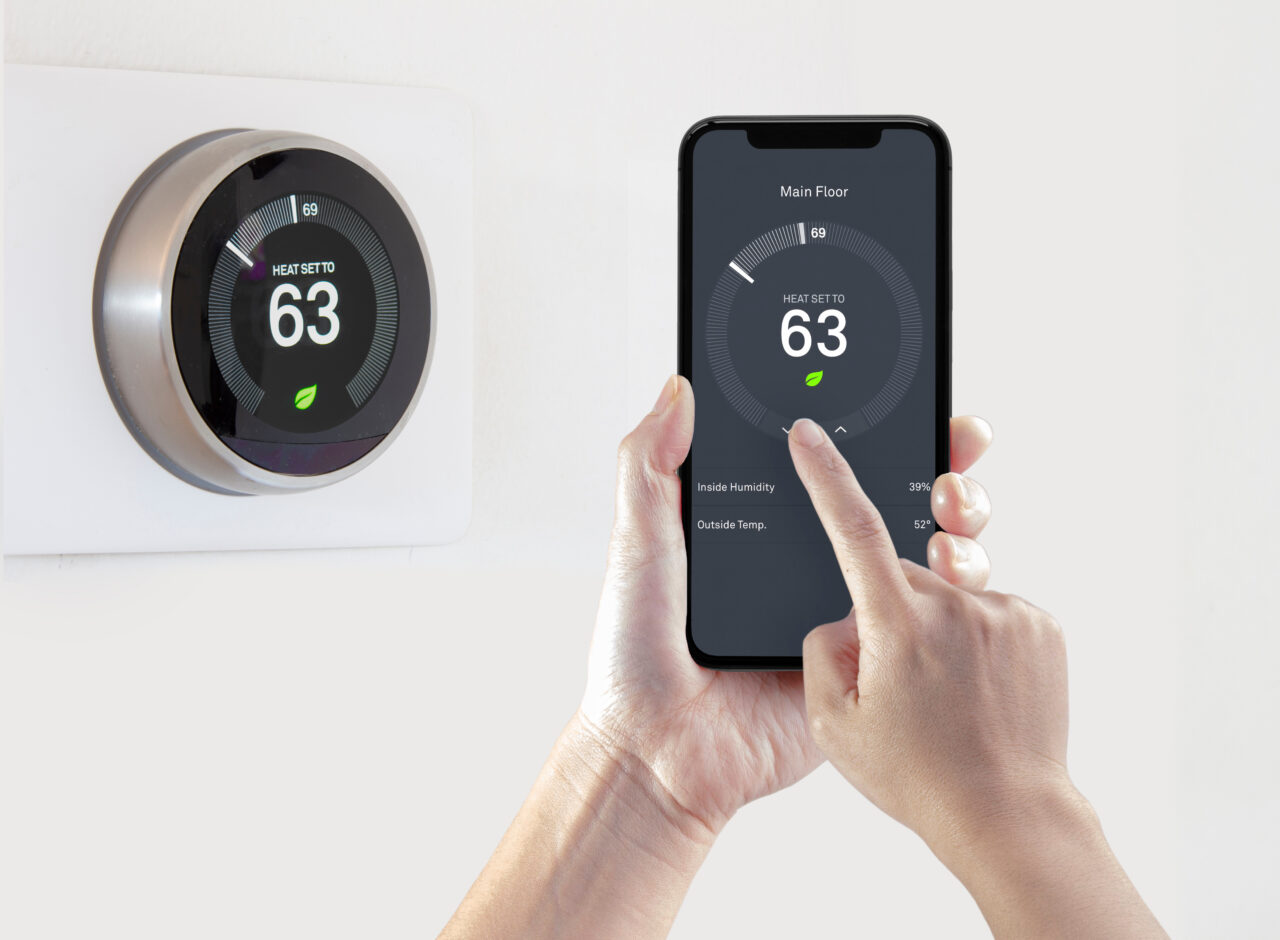As energy efficiency becomes more important for homeowners, a common question arises: “What temperature should I set my home to when nobody is home for the day?” Managing your home’s temperature not only impacts comfort but also affects energy consumption, system longevity, and monthly utility costs. Striking the right balance between comfort and efficiency is key.
In this blog, we’ll explore optimal temperature settings, factoring in seasons, energy efficiency tips, and how smart thermostats can enhance your home’s HVAC system. Our goal is to help you make informed decisions about managing your home’s climate control, especially when no one is around. LM Wilson Heating & Cooling is here to provide expert guidance, ensuring your home stays comfortable, energy-efficient, and cost-effective.
Understanding the Basics: Heating vs. Cooling
Before diving into specific temperature settings, it’s crucial to understand how heating and cooling systems work. Your HVAC system functions by maintaining a balance between your indoor temperature and the outdoor climate. During colder months, your heating system works harder to maintain a warm and comfortable interior, while in summer, your cooling system does the opposite to ensure your home is cool.
The U.S. Department of Energy suggests adjusting your thermostat by several degrees when you’re not home. This helps reduce strain on your HVAC system and save energy, which directly affects your energy bills. However, the exact temperature adjustments depend on the season, climate, and individual comfort preferences.
Optimal Temperature Settings When You’re Not Home
In Winter:
During the winter months, when no one is home, it’s advisable to lower your thermostat temperature. The general rule is to set it between 50°F and 60°F. This range prevents your pipes from freezing while minimizing energy consumption. Most homes are comfortable at around 68°F when occupied, but dropping the temperature by 7-10 degrees when unoccupied can result in energy savings of about 10% a year, according to the Department of Energy.
Why Lowering the Heat is Important:
- Energy Savings: When your heating system runs less often, it uses less energy.
- Extended Lifespan of HVAC Equipment: Reducing the demand on your heating system during unoccupied times prolongs its life.
- Preventing Frozen Pipes: By keeping the temperature above 50°F, you reduce the risk of pipes freezing, which can lead to costly repairs.
In Summer:
In warmer months, the optimal temperature setting while away is around 78°F to 85°F. This keeps the house from becoming excessively warm while also ensuring the air conditioning isn’t running constantly. When you return home, you can lower the temperature to a comfortable range, usually between 72°F and 78°F.
Why Set the Thermostat Higher?
- Avoid Overcooling: Keeping your AC at a lower setting all day when no one is home wastes energy.
- Humidity Control: Setting the temperature above 80°F in humid climates can lead to excessive moisture buildup in the home, promoting mold growth. Keeping the thermostat in the recommended range helps balance humidity and comfort.
- Energy Efficiency: The U.S. Department of Energy states that raising the thermostat 7-10 degrees for eight hours a day can save up to 10% annually on cooling costs.
Special Considerations for Different Types of Homes
Well-Insulated Homes
If your home is well-insulated, you’ll find that temperature changes occur more slowly. This means your HVAC system doesn’t need to work as hard to maintain the desired temperature, allowing you to set the thermostat to more energy-efficient levels without significantly impacting indoor comfort when you return home.
Homes in Extreme Climates
If you live in an area with extreme heat or cold, your HVAC system may need to work harder to maintain even moderate temperature settings. In these cases, a smaller adjustment (e.g., 5-7 degrees instead of 10) may be more appropriate to prevent system strain.
Homes with Pets
If you have pets, you’ll need to factor their comfort into your thermostat settings. Dogs, cats, and other common household pets can generally tolerate temperature fluctuations better than humans, but drastic changes may cause discomfort or stress. During the summer, aim to keep the thermostat no higher than 78°F, and in the winter, no lower than 60°F.
Benefits of a Programmable or Smart Thermostat
One of the most effective ways to optimize your home’s temperature settings when you’re away is by installing a programmable or smart thermostat. These devices allow you to schedule temperature changes throughout the day, ensuring your home is always at the right temperature when needed and saving energy when it’s not.
Advantages of Smart Thermostats:
- Automation: You can set your thermostat to automatically adjust the temperature when you leave and return home. No more worrying about whether you forgot to change the settings!
- Remote Access: Many smart thermostats can be controlled remotely through a mobile app. If your schedule changes unexpectedly, you can adjust the settings on the go.
- Learning Capabilities: Some smart thermostats learn your schedule and preferences over time, making automatic adjustments without any input from you.
- Energy Monitoring: These devices often come with energy usage reports, helping you understand how much energy you’re using and how much you’re saving.
Common Misconceptions About Home Temperature Settings
Myth: Turning the HVAC System Off Saves More Energy
A common misconception is that turning off your HVAC system entirely when you’re not home will save energy. In reality, it’s more efficient to adjust the temperature rather than completely turning off the system. Shutting off the system forces it to work harder to cool or heat the house back to the desired temperature, ultimately consuming more energy.
Myth: Keeping a Constant Temperature is More Efficient
Another misconception is that keeping your home at the same temperature all day, even when unoccupied, is more efficient. However, energy studies show that adjusting the thermostat to account for occupancy can lead to significant savings. It’s more efficient to reduce heating or cooling demand when no one is home.
How Temperature Settings Affect Your Energy Bills
The amount you save on energy bills depends on how much you adjust your thermostat when you’re away. According to the U.S. Department of Energy, the best way to save money is to make substantial adjustments to your thermostat when you’re not home. Here’s a quick breakdown:
- In winter: Lowering the thermostat 7-10°F for eight hours can save you about 10% annually on heating costs.
- In summer: Raising the thermostat 7-10°F for eight hours can yield similar savings on cooling costs.
These savings add up, particularly if you maintain energy-efficient habits over the course of a year. Over time, this could result in hundreds of dollars in savings on your utility bills.
Why the Right Temperature Settings Protect Your HVAC System
Optimizing your home’s temperature not only saves on energy costs but also protects your HVAC system from unnecessary wear and tear. When you consistently adjust your thermostat based on occupancy, your system works less during unoccupied hours. This reduction in workload can extend the lifespan of your heating and cooling units, ultimately reducing repair and replacement costs over time.
An overworked system is more prone to breakdowns, inefficiencies, and higher repair costs. By managing your thermostat wisely, you can prevent these issues and keep your system running smoothly for years to come.
How to Implement These Temperature Changes for Maximum Efficiency
To make the most of these energy-saving techniques, here’s a simple step-by-step guide:
- Install a Programmable or Smart Thermostat: This is the easiest way to ensure your home’s temperature adjusts automatically based on your schedule.
- Set Your Away Temperatures: In winter, set your thermostat to 50-60°F. In summer, aim for 78-85°F.
- Schedule Adjustments: Program your thermostat to revert to your desired comfort level about 30 minutes before you’re scheduled to return home. This ensures your home is comfortable by the time you arrive without wasting energy.
- Monitor and Adjust: Track your energy use and adjust your settings as needed. You can tweak these numbers to find the balance between comfort and savings that works best for your household.
Choosing the right temperature for your home when no one is around is a critical part of managing energy efficiency and reducing utility costs. By making small adjustments to your thermostat during unoccupied hours, you can save money, reduce wear and tear on your HVAC system, and create a more eco-friendly household.
LM Wilson Heating & Cooling is committed to helping you maintain a comfortable, energy-efficient home all year long. Whether you’re interested in upgrading to a smart thermostat, scheduling regular HVAC maintenance, or learning more about how to optimize your home’s heating and cooling, we’re here to provide expert guidance. Contact us today at 336 663-1370 to schedule a consultation and start saving on your energy bills!


